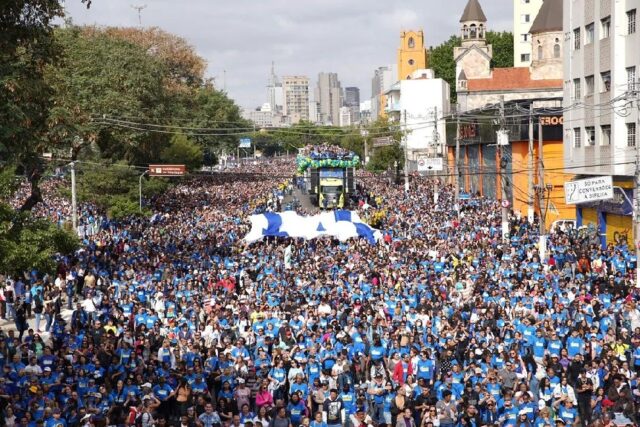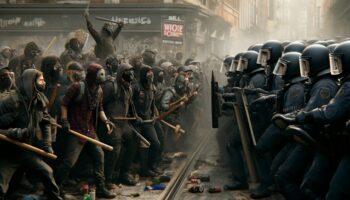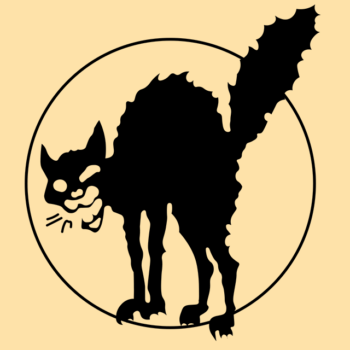Definition:
“Public outcry” refers to a strong and widespread expression of protest, disapproval, or outrage by the general public. It often arises in response to actions, events, or decisions that are perceived as unjust, harmful, or controversial.
Etymology:
The term “outcry” comes from the Old English “utcrien,” meaning “to cry out.” “Public” is derived from the Latin “publicus,” meaning “of the people.”
Description:
Public outcry happens in various forms:
- Protests and Demonstrations: Physical gatherings where people march, hold signs, and chant slogans to express their discontent.
- Petitions and Campaigns: Organized efforts to collect signatures and support for a cause or against a particular issue.
- Media and Social Media: Widespread dissemination of opinions, videos, and articles through news outlets and social media platforms.
- Public Statements and Open Letters: Formal declarations by individuals, organizations, or coalitions expressing their stance on an issue.
- Boycotts and Strikes: Refusal to buy products, use services, or work in protest against certain actions or policies.
Herd Mentality:
Public outcry can be seen as examples of herd mentality because they often involve individuals aligning their behaviors, attitudes, and actions with those of a larger group. This alignment can occur through social influence, a shared sense of purpose, and the amplification of emotions within the crowd. When people see a large group protesting, they may join in even if they are not fully aware of all the details or reasons behind the demonstration. The desire to be part of the group can override individual judgment. Friends, family, or colleagues participating in a demonstration can influence others to join, creating a ripple effect where more people conform to the group’s actions. Being part of a large group can provide a sense of anonymity, reducing personal accountability. This can lead to behaviors that individuals might not normally engage in, such as chanting, shouting, vandalism, or even acts of violence.
The Black Lives Matter movement saw widespread protests against racial injustice and police brutality. The protests in 2020 were among the largest in U.S. history, with millions participating in various locations. It has been estimated that 15-26 million people participated, making it the largest protest in U.S. history and one of the largest movements globally. What makes this protest an extreme example of herd mentality is that it took place right after COVID-19 hit mainstream news in the USA, meaning the same people who were horrified about the spread of the virus also gathered with tens of thousands of others.

The “Straw Hat Riot” of 1922 in New York City is a classic example of herd mentality. The riot began when groups of young men started enforcing an unwritten rule that straw hats should not be worn after September 15. Initially, individuals knocked off hats, but this quickly escalated into large groups assaulting anyone wearing a straw hat, leading to several days of unrest.

“March for Jesus” is a another nonsensical public event where millions of Christians gather in groups to celebrate and publicly declare their faith in the fictional character Jesus Christ. It typically involves participants walking through city streets while singing, praying, and worshiping. The event aims to demonstrate Christian unity, spread the message of Christianity, and engage in community outreach.

Symbolism:
Articles:
Banner
Definition: A banner is a long strip of cloth or other material, often bearing a symbol, slogan, or design, that is used for display or advertising purposes. Etymology: The word…
Black Flag
Description: The black flag is a prominent symbol of anarchism. It is often displayed at protests, demonstrations, and other events as a symbol of resistance and solidarity. The black flag…
Circled-A
Description: The circled-A symbol is perhaps the most recognizable symbol of anarchy. It consists of a capital letter “A” enclosed within a circle. This symbol has been widely adopted by…
Flag
Definition: A flag is a piece of fabric, often rectangular or square, that is attached by one edge to a pole or rope. Etymology: The word “flag” comes from the…
Molotov Cocktail
Description: The molotov cocktail, a crude incendiary weapon made from a glass bottle filled with flammable liquid and a cloth wick, has been used as a symbol of anarchist resistance…
Riot Gear
Description: Riot gear, including masks, helmets, and gas masks, is sometimes used as a symbol of resistance and direct action. These items are often worn by anarchists and other activists…
Solidarity Fist
Description: The solidarity fist, also known as the raised fist or clenched fist, is a symbol of unity, strength, and solidarity. It has been used by various social justice movements,…
The Black Cat
Description: The Black Cat, also known as The Black Cat of the industrial Workers of the World, is a symbol of anarchism that dates back to the late 19th century….




